
This fall we flew to Turkey with one goal: To get away from the all-inclusive hotel experience and see the “real” Turkey, with all of its hidden secrets. The way to fulfill our desire was, of course, to rent a car to be able to travel freely and without any time restrictions. We took our time preparing a route that would take us off the beaten track before the trip — and took off “running” as soon as we landed in Antalya. Our big road trip was a success, and now we want to share the tips and tricks we learned along the way about the whole process of renting a car in Turkey and traveling long distances in it.
The accomplishments we made throughout our journey include, but are not limited to:
- driving 2500 km across the country
- visiting Cappadocia, Pamukkale, Turkish canyons, and many other breathtaking places
- finding our way through some of the most impressive scenic routes in the world
- learning our fair share of Turkish road signs, spontaneous parking rules, and Turkish speeding fines (as well as the way to pay them!)
Article contents
- Should you rent a car in Turkey?
- 15 tips for renting a car — from choosing a rental company to learning about Turkish roads
- Our itinerary for the south of Turkey
- Pros and cons of renting a car
Should you rent a car in Turkey?
 |
 |
We realize the degree of apprehension you might have when deciding whether you should rent a car in Turkey. You might not know the country very well or think of it being somehow unsafe for foreigners to drive on Turkish roads, but we’re here to reassure you of the opposite facts.
From our experience, having a car to drive places here was smooth sailing all the way — even literally, because the roads in Turkey outside the cities are as smooth as butter. There’s so much freedom you get with a car: You’re not dependent on tour guides, timetables, locations, absolutely no restrictions (that is if you don’t forget to fill up your tank!).
It’s true that public transportation in Turkey is vastly well-developed, but still, most of the picturesque spots lay in-between cities or in some faraway places that you can access only with your own mode of transportation.
Must-follow guidelines for renting a car in Turkey

Let us guide you on your journey of discovering the best way to rent a car in Turkey with all the tips you need to know to have a successful trip.
Choosing a rental company
Before your trip, we feel that it’s paramount to choose the company you’re planning to deal with. For us, personally, renting a car on the spot was never an option. Walking around the lot, browsing the rows of vehicles, and finally getting disappointed (either by the condition of the car or by the limited selection) is not our idea of a good time. We know some people who enjoy this hands-on approach, but if you’re more like us, online rental car service is the way to go.
Some of the most popular online rental companies in Turkey include:
Without going in too much detail, we’d say that the first service is probably the only one you’ll need. Just like it was for us. The other two rental companies are ok too, but they don’t provide the same level of customer satisfaction as LocalRent.
The reasons we prefer LocalRent:
- It helps to connect the customers, i.e. you and us, and local agencies (hence the name). The selection is huge. Local car rentals in Turkey generally have lower prices than big chains like Avis or Hertz.
- All the paperwork is very straightforward, with no “fine print” involved. Everything is stated clearly on the company’s homepage:
— full payment for the car,
— X amount of euros you need to pay upfront,
— Y amount you pay to the manager on site,
— the deposit (if one is required),
— the type of insurance
— and the necessary details about the car. - The upfront payment of euros is fully refunded if you cancel the booking up to a day before the start of the rental period.
- LocalRent has search filters that Rentalcars and other companies don’t: you can sort your options by year of manufacture, engine type (gas/diesel), and transmission type of the vehicle, which is much more to the point than the usual “Do you want a big car or a small one?”
- You get to see the real photos of the car you are renting! Not a standard picture of the car class, but several clear shots from the outside and the inside of the actual vehicle. Isn’t this neat?
Bigger rental companies use their international status to try and steer you away from more local services. But until we’re stuck somewhere very remote that only has widely acclaimed rental businesses, we’re sticking with LocalRent. It’s available in Turkey, Montenegro, Iceland, Georgia and 11 other countries.
In fact, we used this service in the very trip that prompted the article you’re reading — we booked our Fiat Egea here for 10 days, to be picked up at Antalya airport, and paid €305, including insurance with full coverage. The booking procedure was very simple and went quite smoothly (more on this later).
Choosing a vehicle
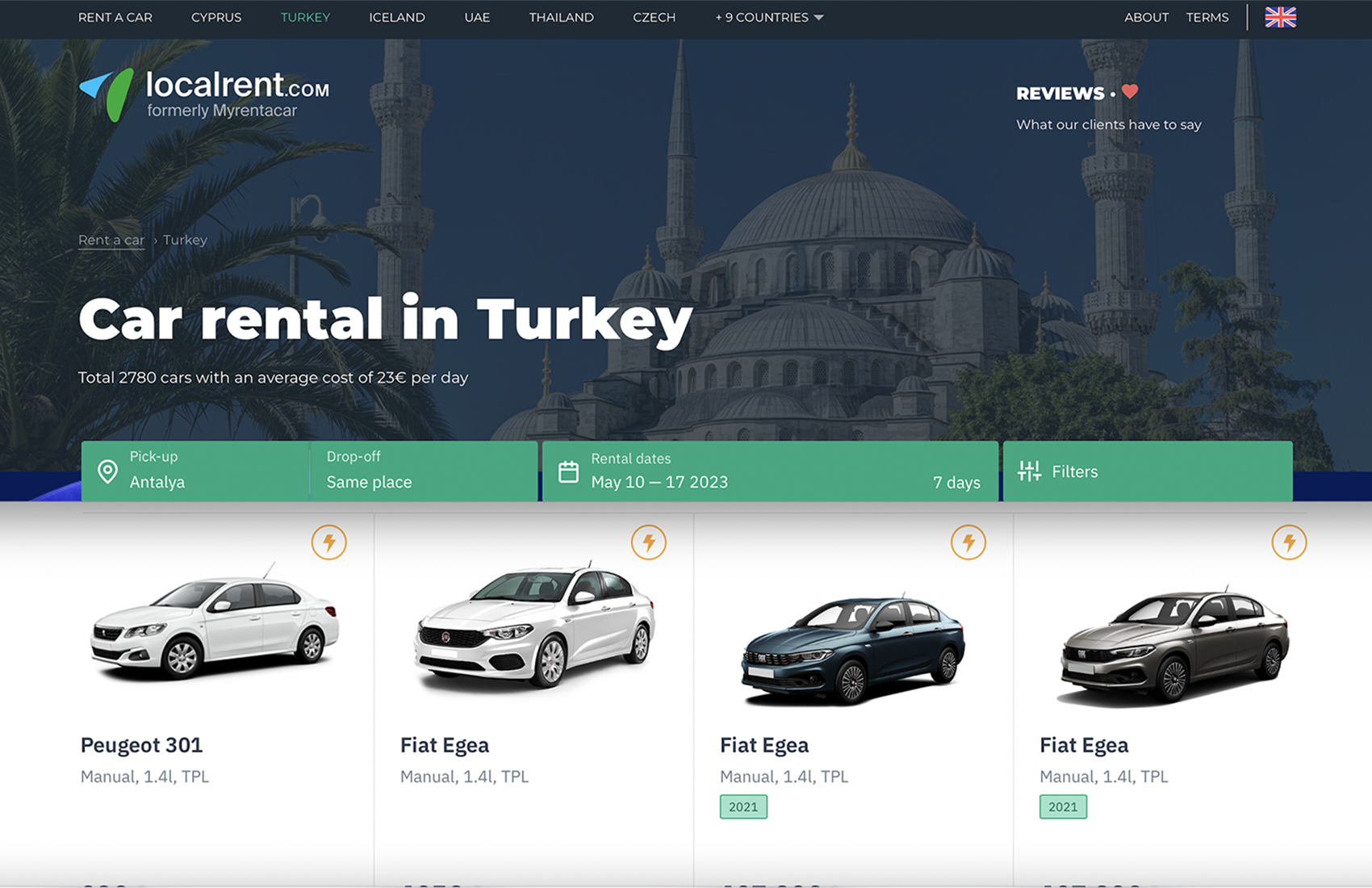
Even though our advice might seem a little single company-centric, do not feel pressured in any way — our advice will work for any service you’re planning on using.
How do you choose a car to rent from a catalogue bursting with options? You break it down to your preferred engine and transmission type, size, year of manufacture, and even color. The rumor has it that white cars are slightly cheaper to rent and that most of the cars available are also white color (so was our car, but we didn’t think much about it when choosing).
Personally, we recommend booking a car with a diesel engine, to save some money on fuel. Gas in Turkey is not particularly cheap, and diesel is much more efficient — our car’s consumption was as low as four liters per 100 km, which is basically nothing. Plus, gas stations are literally everywhere in Turkey, both along the highways and in the city, so you won’t have trouble with getting fuel.
A brief recap of what to look for when choosing a rental car:
- automatic transmission, which is much more convenient in the city
- diesel engine, unless rental price is much higher than that of gas
- preferably a car that is less than three years old
- check the cheapest options thoroughly (the car could be too old or lack full insurance coverage, or the deposit might be too high)
As we mentioned before, the car we chose was a Fiat Egea. Apparently, this model is manufactured locally — that’s why it is cheaper to rent and is a frequent sight on Turkish roads.
We’d never driven a Fiat before and thus had no expectations whatsoever. Luckily, the car turned out to be very reliable, suitable both for navigating the city traffic and covering Turkey’s long distances. The only time we had any kind of trouble with it was when it refused to start on one icy morning in Cappadocia… But then again, it was -7ºC (19.5ºF) outside, and the car was running on local diesel, so we’ll let this one slide.
Having correct permits and documents + being eligible to drive
 |
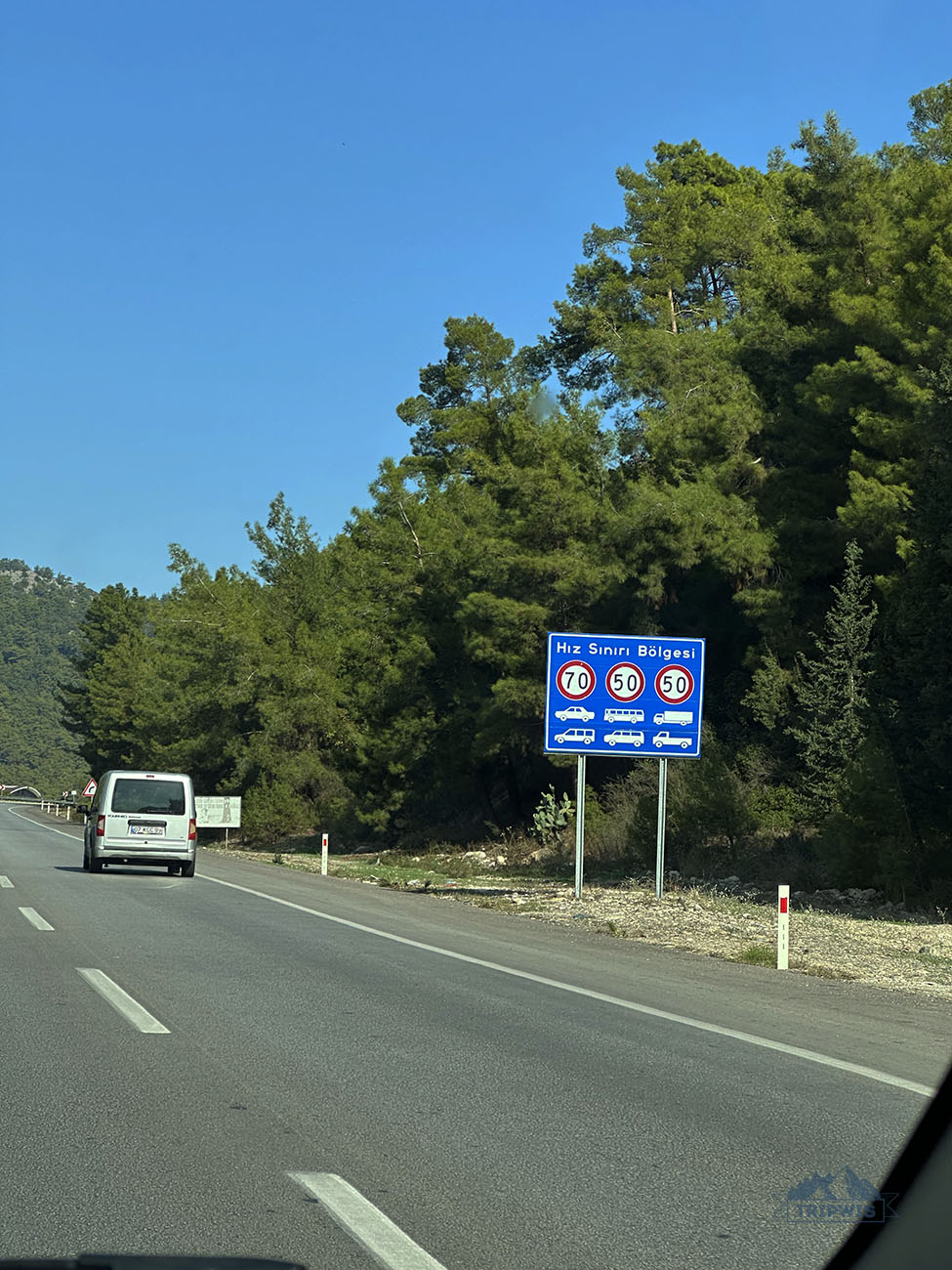 |
Can foreigners rent a car in Turkey? If they do, what kind of documents do they need? Good news! You don’t have to run around trying to gather last minute paperwork before your trip just to be able to drive places yourself.
- To rent a car in Turkey you will need a passport, a driver’s license, and a credit card. You don’t need to issue an International Driver’s License. In Turkey, it will be no use.
The country has signed and ratified the Vienna Convention on Road Traffic, so it recognizes driver’s licenses of every country that has done the same. US and EU citizens can just use their ordinary licenses here.
We were stopped twice by Turkish traffic police, and our documents didn’t cause any problems. The manager at the car rental place didn’t question our driving licenses either.
One thing to keep in mind though is that rental companies have age requirements for drivers. In most cases, the minimum required age is “22 or older, with at least two years of driving experience”. Sometimes the minimum age is raised up to 25–27 years, and the driving experience up to 3–5 years. That mostly concerns luxury cars and minivans. Don’t get personally offended if you’re young, you might find it comforting to learn that there is an upper limit for the driver’s age, which is usually 65–70 years.
To sum up, can you rent a car in Turkey as a tourist? The answer is yes, only if it’s not your gap year or a trip to celebrate your retirement.
Comparing prices
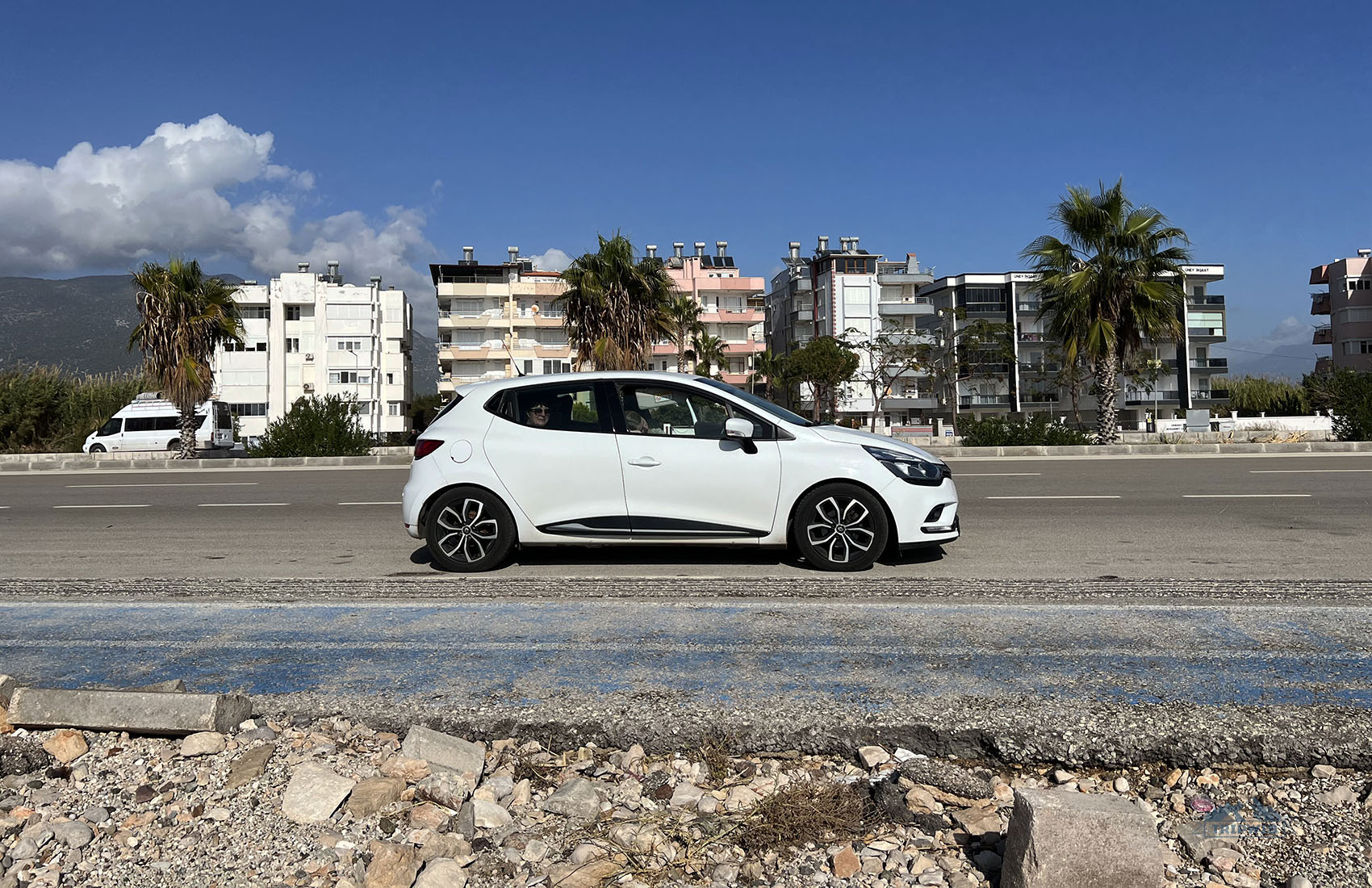
We understand that your desire to choose the most financially responsible rental is one of the main concerns of your trip. The options can be overwhelming, so we put together a little cheat sheet for easy reference.
All prices are in euro (Turkey mostly uses this currency when it comes to tourism issues) and relevant for rentals for a week in June for high season and in March for off season from LocalRent.com.
| High season (May–October) |
Off-season (November–April) |
|
| Manual | from €18/day | from €10/day |
| Automatic | from €20 | from €15 |
| CUV | from €25 | from €15 |
| Lux | from €95 | from €80 |
| In Antalya | from €18 | from €10 |
| In Marmaris | from €27 | from €19 |
| In Istanbul | from €20 | from €15 |
So, how much does it cost to rent a car in Turkey? Well, the prices are quite reasonable even in the high season, with €20 being the average. Keep reading to learn about the additional costs — a child seat or a second driver option, among others, are add-ons to the aforementioned prices.
The good thing about the rental process is the fact that the longer you rent the car for the cheaper it is. Renting a car for a day or two might be a little unreasonable, with prices going up at least 50%. During the high season, the average daily rental price is €35, which is not that terrifying, yet it still hurts your typical Scrooge.
Choosing your insurance
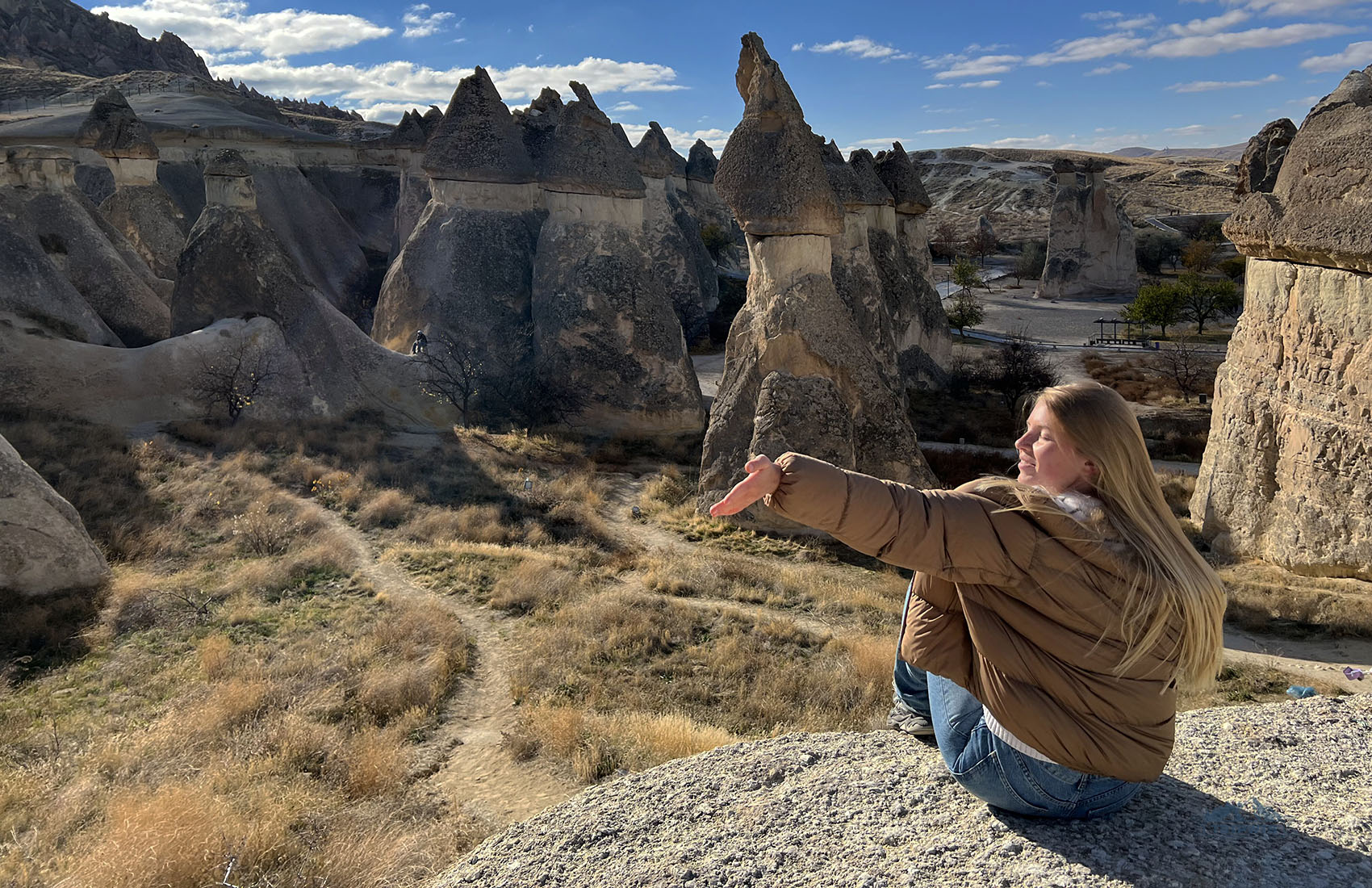
We understand that thinking about car insurance when planning your trip can be tiring and a little unnerving, so we won’t scare you with complicated tables and rows of numbers.
Main things you need to remember when you rent a car in Turkey:
- The basic insurance is mandatory here and usually comes free of charge. The pack includes: Collision Damage Waiver (CDW) which doesn’t cover damages to glass and wheels (the costs for these come out of the deposit you paid for the car), Third Party Liability Insurance (TPL) or insurance of third-party cars you somehow messed up, and Theft Protection (TP) which is pretty self-explanatory, unless you left the car door wide open, in this case the theft’s all your fault.
- Personal Accident Insurance (PAI) is also free of charge and is calculated by the number of seats in the vehicle.
- Super Collision Damage Waiver (SCDW) — an extended insurance, not required by law. It’s usually quite pricey, but it covers practically all the damage, even windows, wheels, etc. The costs are paid by the insurance company in case of an accident (the ones that go over your deposit amount).
- Full Coverage — even more expensive insurance plan, it’s supposed to let you relax and not worry about going bankrupt should something happen to the car. With this plan, you don’t pay a dime out of pocket, everything is covered by the insurance company, even if you were involved in a hit-and-run (to be clear, if you were the one who got hit, not the one who ran).
We believe it’s better to be safe than sorry, so we suggest you spring on some extra coverage options on top of your basic plan. Especially if you plan to drive in the cities, the traffic is crazy there and things happen all the time. Would be awesome to have everything covered and not go crazy in case of mishaps.
Renting your car with the help of LocalRent — a step-by-step guide
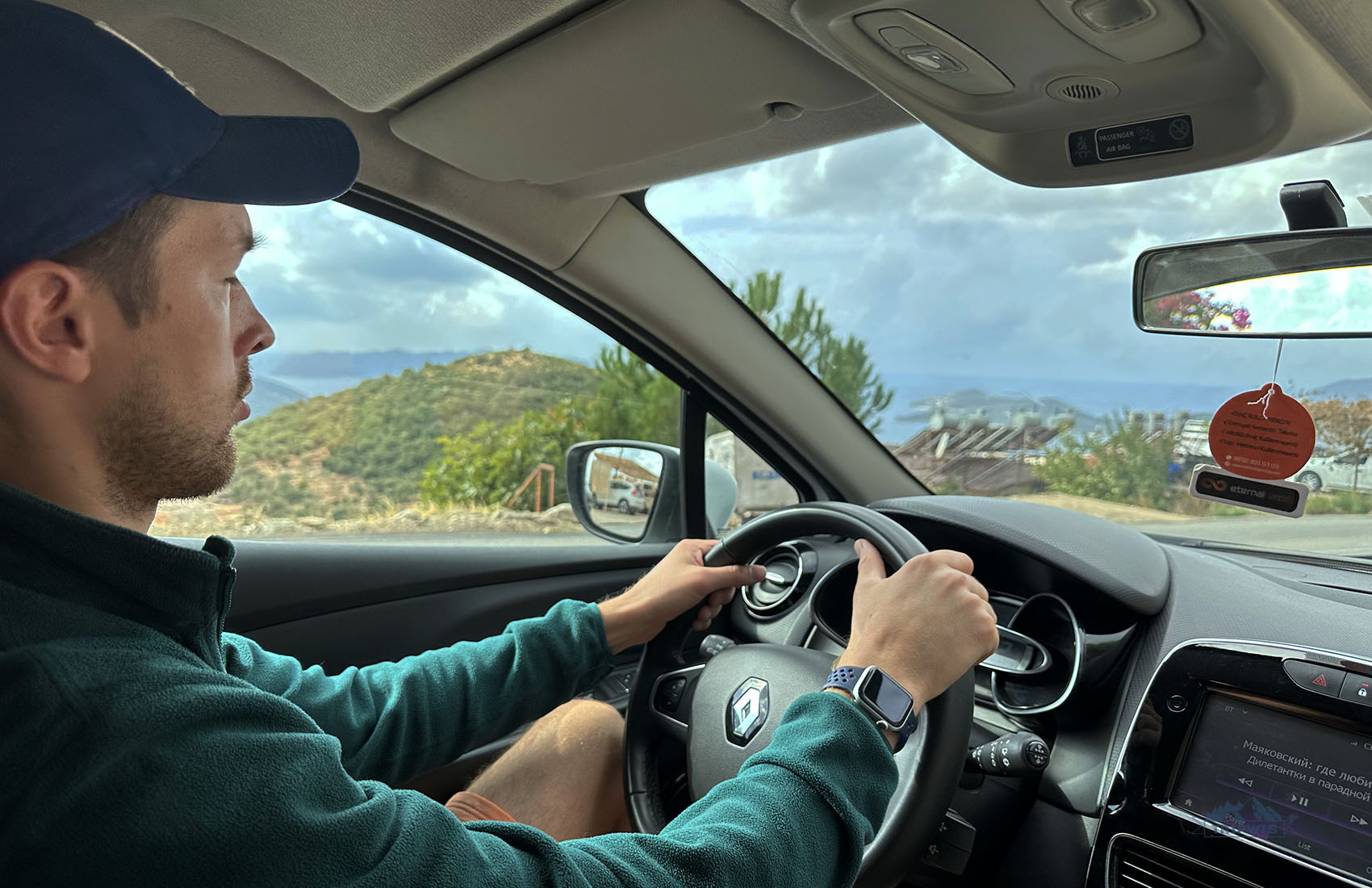
If it’s your first time renting a car in Turkey, you should try LocalRent. In addition to everything we’ve already mentioned about the customer service and their company’s beliefs, their website is aesthetically pleasing, with great user experience and intuitive navigation. Even your grandma can easily go through the process of renting a car through LocalRent. But if you’re not as technically savvy as your granny, here’s a step-by-step guide to using the website:
- Go to the LocalRent.com website. Choose the country you’re planning to visit (in our case, it’s Turkey). In the “pick-up” and “drop-off” sections, select your starting point and your final destination. Your pick-up doesn’t have to be Antalya. You can choose it to be Istanbul, Alanya, Izmir — any place you’re planning to start your trip from. Select your rental dates and click “filters”.
- Using the suggested filters, narrow down your selection choice. We usually select “automatic” transmission, SuperCDW or Full Coverage insurance, and “no deposit”. You can also select “free cancellation”. The filter menu has tons of other car characteristics to help you make the choice that best suits your needs. You can select the car by the type of engine (gas, diesel, hybrid), type of drive (front, rear or 4 wheel), fuel consumption, and even the year of manufacture. When choosing a relatively new car, keep in mind that it can already have some pretty impressive mileage on it — our poor three-year-old car had so far done 100,000 kilometers! In addition, click the “unlimited mileage” option to have free reign of how far you want to travel in a day, without any restrictions. There are additional options you can choose from: Whether or not you want a car to have a child seat, a bike rack or a roof rack. Pretty neat!
- After you’ve chosen your filters, scroll down and pick your car class under the “menu” sidebar. It can be Economy, Standard, SUV, Luxury, Convertibles, and Vans. Less expensive cars are shown at the top of the list. After you’ve narrowed down your choice, continue by clicking on your chosen car.
- Check your rental car card with all the important info — the real-life photos of the vehicle, options of choosing your preferred insurance plan and some additional services, like if you want to have the second driver (comes at extra cost) or winter tires in Turkey (at an absurd cost of €100). Check all the necessary boxes and click “Book now”. You’re done, congratulations!
A little P.S. From our experience, try and check the box “accept credit cards” so you won’t have the unfortunate experience we had last time. Taking cash out can be tricky, especially in the airport-adjacent areas. When you do find the ATM that doesn’t charge enormous fees for the transaction, it can be… out of order (true story, happened to us not that long ago, made a whole process of renting a car go from a 20-minutes-and-done deal into a whole hour affair).
As we’ve mentioned above, using LocalRent to rent a car in Turkey is easy-peasy: The website’s usability is off the charts. If you still have a question, do not hesitate to contact their customer support (or ask us in the comments below!).
Picking up and dropping off your rental
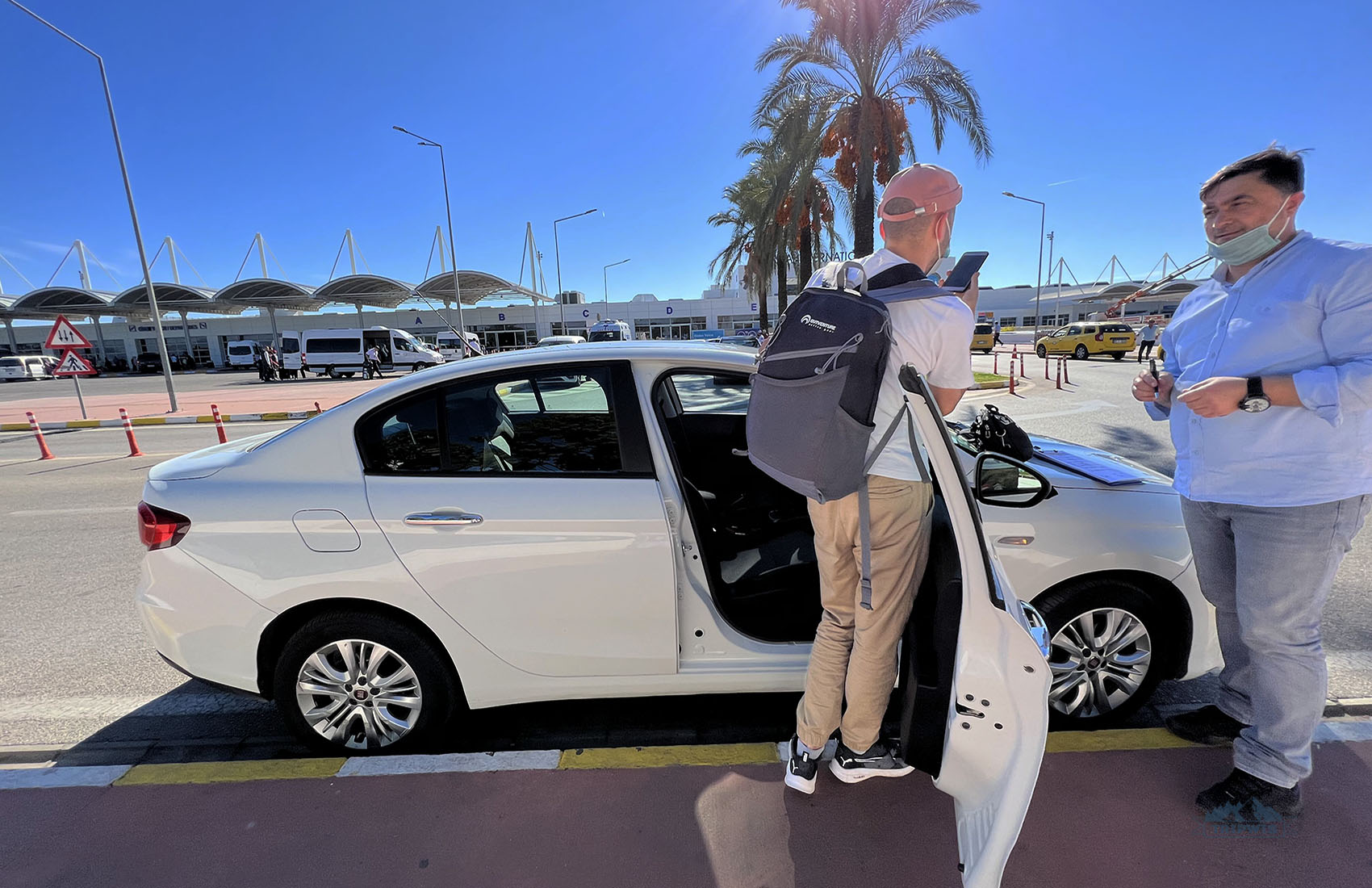
Car pick up is a pretty simple step, especially if you’re using the services of LocalRent in Turkey. Our experience with them was a delight: When reserving a car on their website, we chose to pick it up at Antalya Airport. The rental company contacted us 24 hours in advance to double-check our flight arrival time and number. When we finally landed, they had a representative waiting for us by the exit; he promptly showed us to our rental.
- Now, even though LocalRent customer services are done in a variety of languages depending on the customer, when it comes to making deals on the ground, it’s all done in Turkish (remember, the company peruses only the local services).
Back to us getting our rental. Once we reached the car, it was time for our manager to start filling out the rental agreement. He asked for the passports and driving licenses of both drivers (we had indicated there would be two drivers). Then we took photos of all the dents, scratches and other imperfections of the interior and the exterior of the car and specified them in the agreement. We usually go the extra mile and film the moment of inspection, too, just to be safe. After securing the agreement with the payment, it was time to hit the road!
If you do take away one thing from our experience, let it be always taking your time inspecting the car and reading the rental agreement carefully. Also, don’t ever hand over your documents or personal belongings to the rental company as “leverage” — it’s a scam.
Car drop off is an even easier task when you rent a car in Turkey. You have two things to remember. One — try to return your car a little earlier then you agreed, to ensure that you have enough time before your next thing. Two — wash your car before you return it. Usually, it costs around 200 liras (€5). It’s a nice thing to do, plus local companies sometimes require it.
The whole process of car drop off was fast and efficient: The night before our flight, we arranged we would be by the terminal at 5 a.m. We came there at the agreed time, waited for a few minutes, and then called up the manager to locate them. They took a couple of minutes to check the car and make sure the tank is full and everything’s in place. And that was it! After the whole thing was done, we had nothing but pleasant memories about the process of renting a car in Antalya.
Checking out fuel prices

To make a decision about what type of car engine to choose when renting a car, you need to know the situation with fuel prices in Turkey. As a rule of thumb, diesel seems to always be the best option in terms of fuel consumption, but if you’d rather just see the current prices, here they are:
- Gas 95 — 36.8 liras for a liter (€1.12)
- Diesel — 39 liras for a liter (€1.19)
There are plenty of gas stations throughout Turkey, both in cosmopolitan and more rural areas, so chances are you will not get stranded somewhere without fuel. All the stations are usually full-service: The attendants will help you put gas in your car.
Preparing your navigation options beforehand
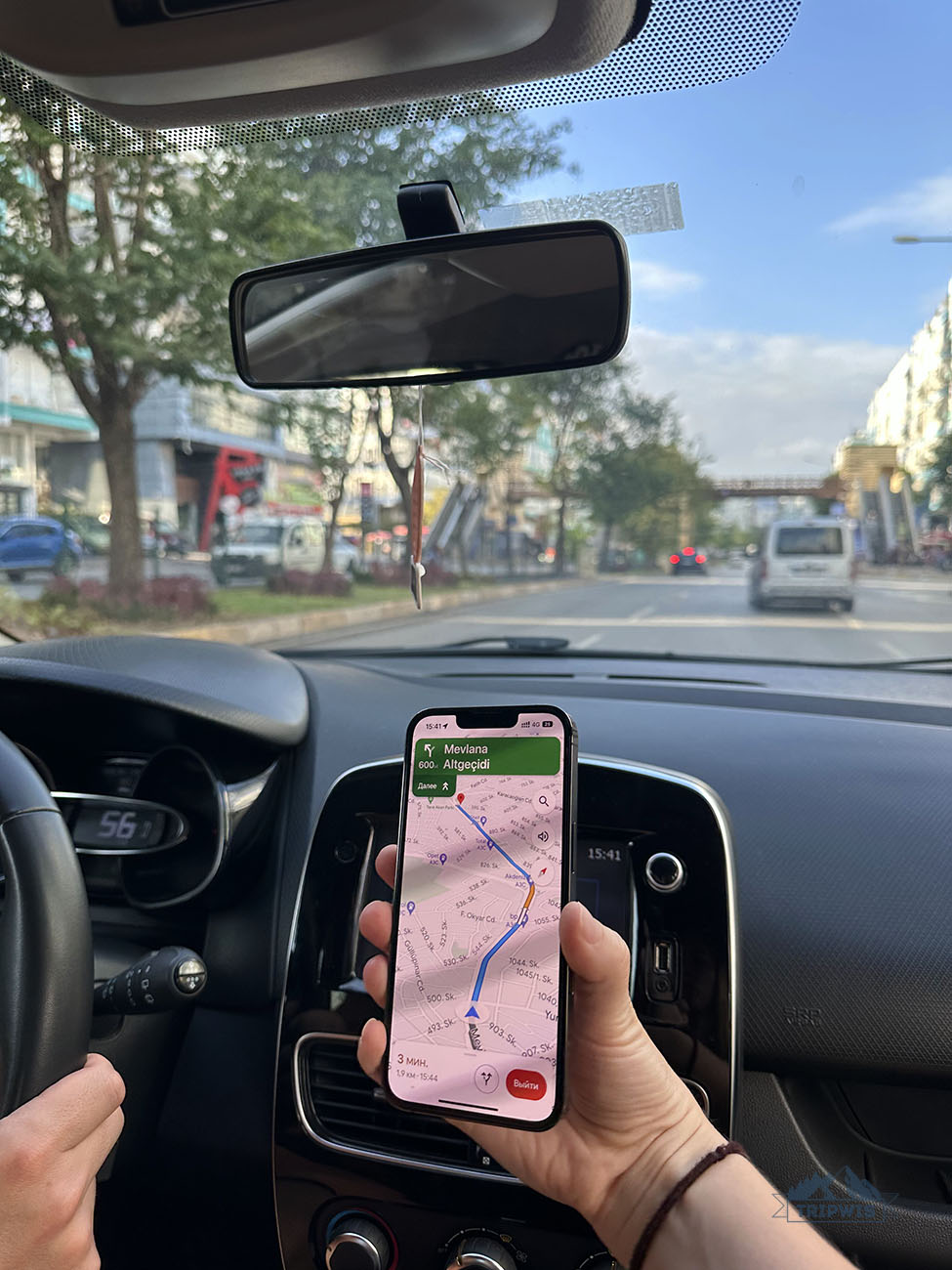 |
 |
Even though navigating your way around Turkey is quite easy, make sure to still download Google Maps in advance.
For Turkey, Google Maps is ultimately the best option among all other navigators. Maps.me is not too bad until it leads you to some remote abandoned location. Personally, we’re not a fan of the Maps.me’s voice-overs and its desire to make us take the wrong exit one too many times.
It is best to have both online and offline maps, as the connection on the road can be unstable, especially in the mountains. You can have a problem if your online GPS crashes. In the best tradition of Boy Scouts — always be prepared!
Buying a SIM-card
When you arrive in Turkey, buy a SIM card with the Internet option. This will allow you to use a nice Google navigator which works well online, switching to offline maps when no network coverage is available.
On our trip, when we first arrived in Antalya and got our rental, we headed straight to the Mall of Antalya, as it’s the closest place to the airport where you can buy a SIM card. The lowest service plans available to tourists start from 500 liras (almost €15 for 20 GB Internet and 750 minutes of calls), and are offered by Vodafone and Turkcell. To get registered, you need only your passport and cash, which is pretty convenient.
If you don’t want to get a local SIM card, check with your current provider about their overseas service coverage.
Get familiar with Turkish traffic rules and regulations
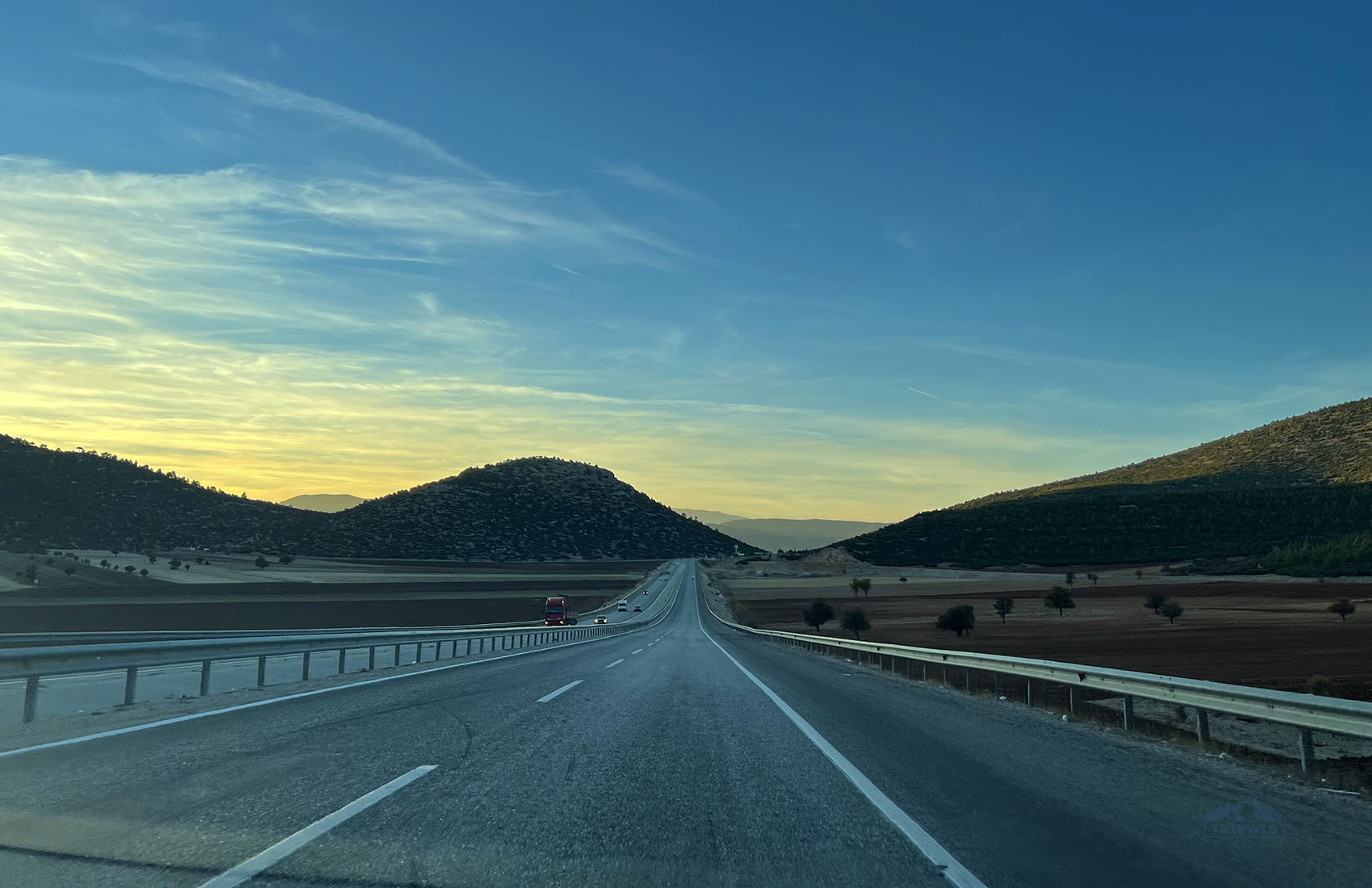
Turkey’s traffic regulations are pretty standard, almost the same as in most places. That “almost” got us fined 314 liras, though.
Some main things to learn:
- Roads are packed with speed cameras, and LOTS of them. They are installed on lampposts, hidden in the bushes, mounted on traffic control cars, and even drones. There used to be signs warning drivers about the camera ahead, but they’re slowly getting taken down. To be safe, it’s best to stick to the speed limits:
– in urban areas — 50 kmph (31 mph)
– rural areas — 90 kmph (55 mph)
– motorways — 120 kmph (68 mph)
– it’s ok to speed 10% above the limit, but 11% will get you fine - Sometimes you’ll see odd speed limit signs, like 82, for example. Add 10% to that and you get 90. That is, at some points you have to stay below 90, and at some you can go as fast as 99, depending on the road signs.
- The Turks also have peculiar signs, like the ones telling you to watch out for boars or tortoises. The Turkish version of the STOP sign says DUR.
- Children under 12 and shorter than 45″ may only ride in the back, in a child seat. They rarely check that in Turkey, but it’s a good idea to bring your own seat or get one when you arrive (make sure to check “child seat” box when you get a car in Turkey).
- The Turkish police may pull you over to check your license and registration. Over the course of 10 days, we were pulled over twice. They asked us where we were headed, checked our licenses, and let us be on our way.
- In general, the driving style on the Turkish roads is a thing to remember the country by: fast, furious, often without blinkers, with sharp lane switches and HONKING AT ANYONE WHO TAKES A SPLIT SECOND TOO LONG AT A TRAFFIC LIGHT. Sorry for yelling, but come on, it turned green less than a second ago, chill!
Doing fine with fines
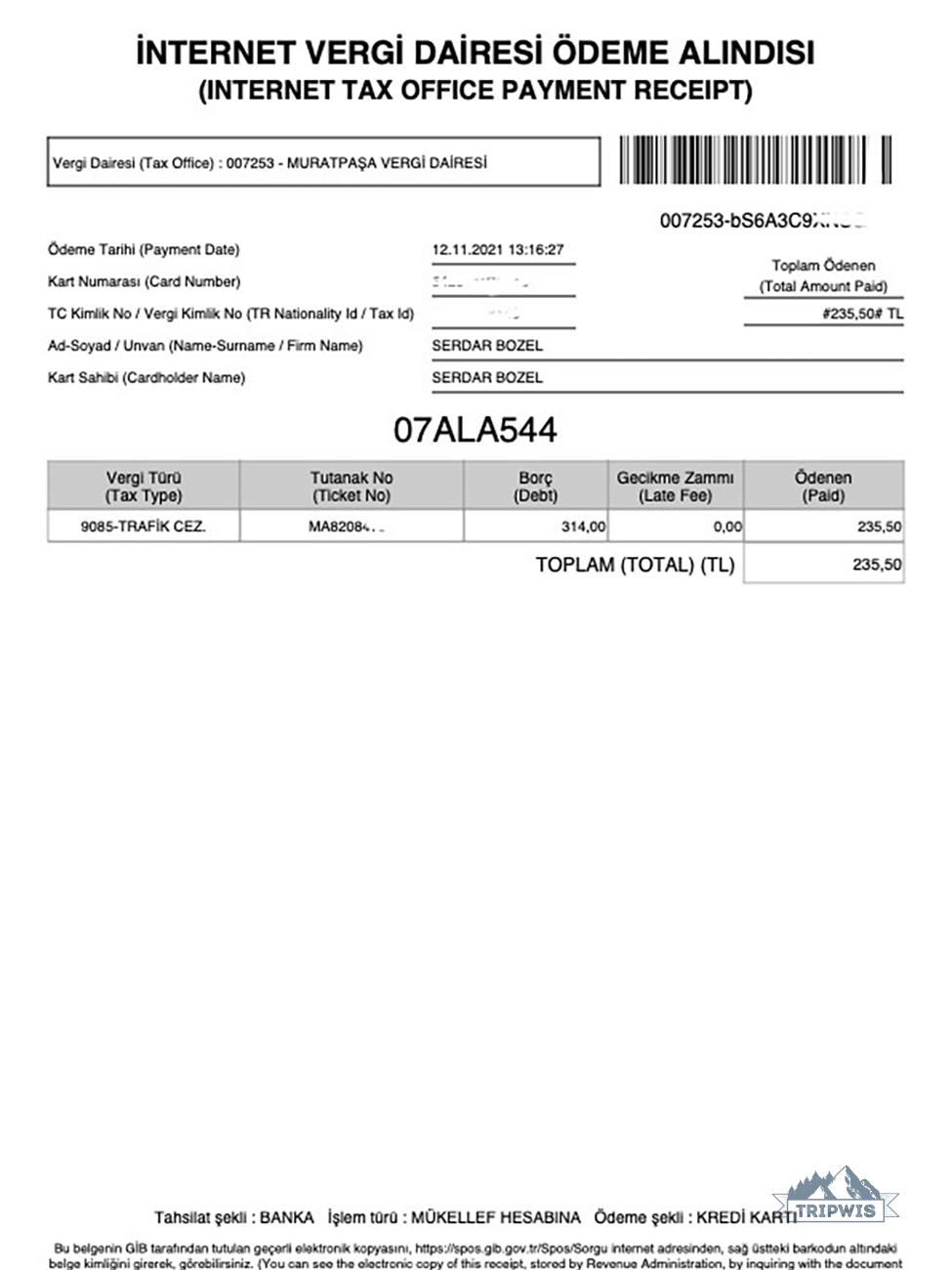 |
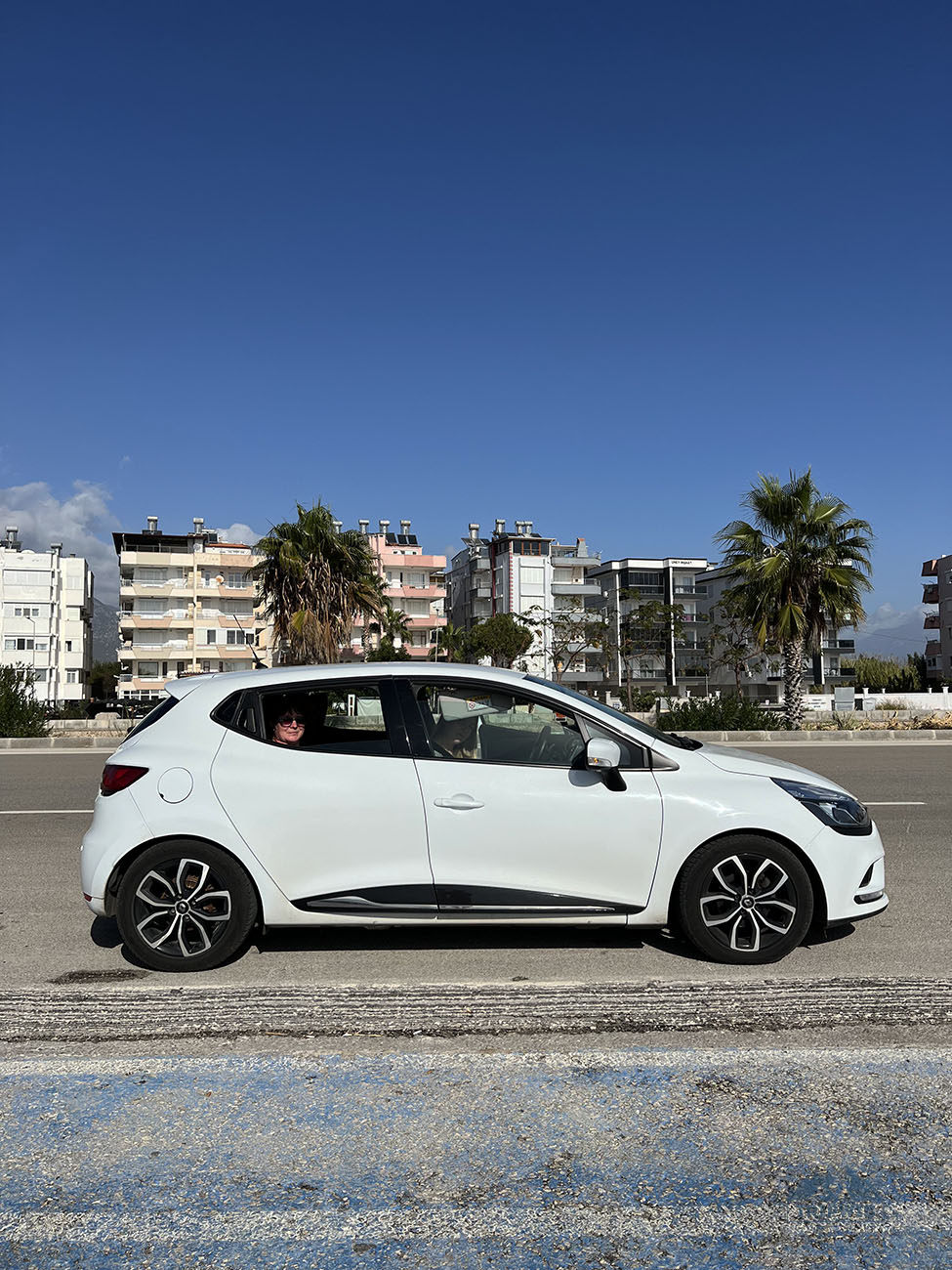 |
When it comes to fines, the Turks do not like to wait to shake you for some of your hard-earned cash. We got our first (and only, thank God!) ticket just fifteen (!!!) minutes after the violation: We had ignored a residential area sign and kept driving 90 kmph instead of the permitted 77 kmph. The rental company forwarded us the ticket along with the payment slip (we immediately realized what we’d done wrong). They took care of the fine, and we just paid them back in cash later, with a discount of 25% for early payment.
The fines SIGNIFICANTLY surged in the last years. Here’s what you can get fined for in Turkey and how much it’ll cost you in 2024:
— 1507 liras (⁓€50) for speeding 11–30% above limit
— 3136 liras (⁓€100) for speeding 30–50% above limit
— 6440 liras (⁓€200) for speeding over 50% above limit or driving under influence
— 691 liras (⁓€22) for unfastened seatbelt or illegal parking
Note that it’s strictly prohibited to use a hand-held cellphone when driving. The fine is 1507 liras (€50), which is like a local minimum rate of some sort.
If there is ever an accident, it is crucial that you ask for a police report (kaza raporu) or you’re likely to run into an issue with the insurance company! Make sure you have the rental company’s phone number. That should be the first place to call and they’ll guide you. Let’s hope you’ll never need this information, but it’s better to be prepared and educated on the problems that might arise during your trip to handle them with ease.
Learning about Turkish roads
The highways in Turkey provide the spectacular views of the surroundings as they zigzag through mountain passes, canyons and next to the sea. The roads are great in quality too, no bumps or holes, smooth as glass — at times it feels like you’re skating on ice. Pay attention to the speed limit though and remember the fines.
The oncoming lane is rarely separated, there are sections of the road — mainly in the mountains — where there are three lanes with the middle one you can use to overtake the car in front. We had no problem using just a mid-size city car like Fiat Egea and didn’t even think of getting an SUV.
Considering parking options
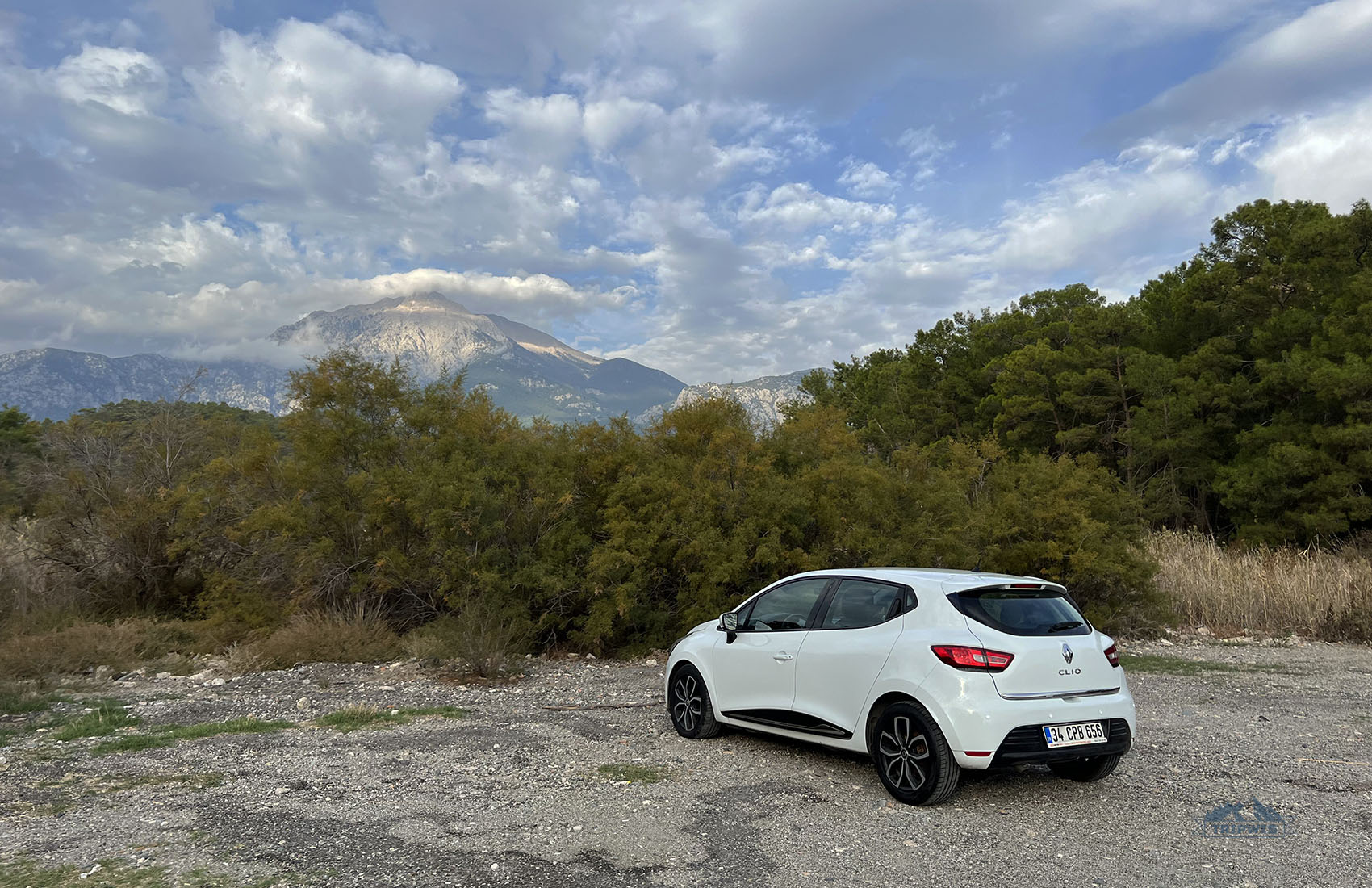
As with gas stations, it’s likely you won’t experience any trouble with finding parking in Turkey. We used the hotel parking wherever we went — Fethiye, Side or Antalya, which was very convenient. Check with your hotel beforehand to see if they provide the option.
If you rent a car in Turkey to experience the magic of Cappadocia, you might witness here free spontaneous parking. Mind that you do not obstruct the road for other people, as there are no attendants to help you.
In other parts of the country, near the top tourist attractions, there will always be paid parking — for example, in Pamukkale or the Old Town of Antalya. Most of the time the paid parking is not regulated and doesn’t have a parking meter, so you have to pay in cash to the person working there. The average price of parking is 20–30 liras (€1–€1.5).
Learning additional useful info

Keep count of additional expenses that might drive up the total when you go to pay for your rental. They include but are not limited to:
- Second driver (should be specified when filling the rental car agreement)
- Car seats for babies, GPS, etc
- Additional car insurance (usually only the basic required type is included)
- Different drop off location
- Age or driving experience is less than required
Be wary of toll roads and check in with your rental company: Ask them what kind of system is installed in your car (HGS or OGS). That way you know which toll gate to choose when driving on the toll road. There are always alternative free motorways to take, but crossing the Bosporus for free is impossible — all the tunnels and bridges have a toll system there.
Try and compromise your plans according to the city you want to explore. While it’s undoubtedly crucial to rent a car in Turkey to travel to Cappadocia (it’s the best way to see this destination, on your own terms), it’s advisable not to bother with car rental in Istanbul. The local traffic will drive you crazy, plus public transportation here is pretty extensively developed — learn how to get to the city center from Istanbul airport.
What’s the best way to rent a car in Turkey? Here are our five main tips:
- Book on LocalRent, it works with local companies and thus has the best deals
- Diesel cars use less fuel
- Prices are lower in off-season
- Book for a longer time period — at least four days and more, that way the price per day is lower
- Travel as a group — in our case, we split the price of the car by four people and it came out very cost-efficient
That’s pretty much all the information you need to know to be able to rent a car in Turkey without complications. If you read the article and still aren’t convinced to try driving on winding roads all by yourself, in Turkey (as in the rest of the world), there’s always the option to rent a car with a driver. We suggest you try out the KiwiTaxi service. It’s a private transfer company, with different types of vehicles to choose from: For families there are budget-friendly middle-sized cars, for business trips — classy business class cars, for groups — bigger buses that seat up to 19 people. So simple and convenient, it might be the best option to travel freely in Turkey without the stress of the actual driving, if that’s not something you enjoy doing.
Exploring Turkey by car — our experience and thoughts

Our latest trip showed us Turkey like we’d never seen it before, and all of it was thanks to our rented car. We had an extremely packed itinerary, with different destinations we wanted to explore — all of them at a significant distance from one another.
Our goal was to squeeze both sight-seeing and pure hotel leisure experience in just 10 days, and we managed to do it!
If you are planning a 10–14–day trip, you will have to meet half-way with your desire to have a full night rest. There are just so many things to see in the south of Turkey alone, it is an impossible feat to cover all of them. Our schedule looked something like this:
- Flight to Antalya — 2 days in Fethiye — 1 day in Pamukkale and on the Salda lake — 3 days in Cappadocia — 3 days in Antalya
Distance: 2500 km (just over 1500 miles)
Gas expense: 3500 liras (€105)
Longest non-stop trip: 7 hours (from Cappadocia to Antalya)
Toll roads: we didn’t encounter any
While we do realize that this article is for those of you interested in renting a car in Turkey, we can’t help but share a few places we stayed at!
🏨 Liberty Fabay in Fethiye — a 5-star-hotel to get a taste of luxury living even if only for a couple of nights
🏨 Oyster Boutique Hotel in Side — just a budget-friendly place to rest on your way from Pamukkale to Cappadocia
🏨 Helen Cave Suites in Göreme — an amazing hotel, we just loved our stay there: It’s located near the main view point for the hot air balloons, has central heating in off-season; and most importantly, it’s located in a cave (a selling point for Cappadocia for sure) but not in a claustrophobia inducing way, don’t worry!
🏨 Sealife Family Resort in Antalya — a 5-star-hotel, one of the most popular in town; it is open all year round and is located in the best (at least for us) part of Antalya, near the Konyaaltı beach where you can’t possibly get bored even if you try.
Pros and cons of renting a car

As someone who previously experienced Turkey through the lens of all-inclusive resorts, we really enjoyed this more adventurous style of vacation. When you travel by car, you see a completely new side of Turkey. And not just Turkey, any country feels entirely different when you’re behind the wheel — that’s how we felt in the USA, Spain and other countries.
So you’ve finally decided to rent a car in Turkey… what are the pros?
+ Inexpensive, and LocalRent (we consider them the best!) operates here
+ Relatively cheap fuel
+ The highways are amazing
+ So many incredible places to visit that you wouldn’t otherwise had the chance to see
+ You are free to plan your journey however you want
+ Competent police officers, proper traffic regulations
Cons:
– There are cases of wild animals on the road: You have to be really careful, especially at night
– Sometimes the speed limit switches from 70 to 90 kmph and back every 500–700m or less than half a mile. The locals seem to pay it no attention though. Remember that you aren’t a local (at least not yet) and that means following the rules to a T
– Not all locals follow the traffic regulations so you have to be extra vigilant
– Driving in Antalya is a pain in the butt — the streets are narrow; the cars are everywhere and there’s not enough proper parking
Final thoughts
The moment I dusted off my 10-year-old driver’s license, I try to use rental cars whenever I can. It’s a completely different way of traveling.
If you ask us “Is it worth renting a car in Turkey?” our answer is simple and straightforward — yes, a hundred percent! You can visit Turkey several times but once you rent a car and work out your own route, that’s when you’re actually experiencing the country. Exploring Turkey by car is a treat, the roads are nice and scenic and the sights are truly spectacular.
We hope that we’ve inspired you to bring your own driver’s license out of retirement and rent a car in Turkey to see the whole new side of the country adored by so many.




My wife and I live in Atlanta and Florence, Italy. We are traveling to Istanbul next Wed, Dec 11. We were thinking to rent a car. Really enjoyed all the useful info and advice you put here. Thank you.
Al & Elena
Hi Al and Elena! We’re so glad you found our guide useful! Even though your time in Istanbul has already started, we believe you would benefit from checking out our detailed Istanbul itinerary, as well as our guide to the best areas of the city to stay in. Have a fun trip!